On the afternoon of May 9, the thematic report on "Photovoltaic and Energy Storage Materials" hosted by the Department of Electrical Engineering and Applied Electronics of Tsinghua University was held in Meeting Room 102, Zone 3, West Main Building. 6 professors from the University of Science and Technology of China shared the research results and progress of their respective research groups in the fields of perovskite photovoltaics and lithium-ion batteries in recent years in their brilliant academic reports, and discussed relevant academic issues with the participants in depth. The report was hosted by Yi Chenyi, associate professor of the Department of Electrical Engineering and Applied Electronics.
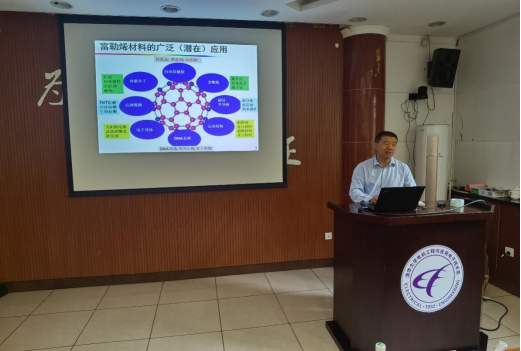
Yang Shangfeng, a professor at the University of Science and Technology of China, a doctoral supervisor, winner of the National Outstanding Youth Fund, and a member of the Royal Society of Chemistry, gave a report on "Fullerene Functional Materials Regulating the Electronic Transmission Performance of Perovskite Solar Cells". Yang Shangfeng first introduced the physical and chemical properties of fullerenes and its application prospects in the fields of light, electricity, and magnetism. Then, he introduced the application of fullerenes in the electron transport layer, cathode interface layer and defect passivator of perovskite solar cells; finally, he introduced the new fullerene derivatives developed in recent years and their applications in the additives of the perovskite photoactive layer in details.
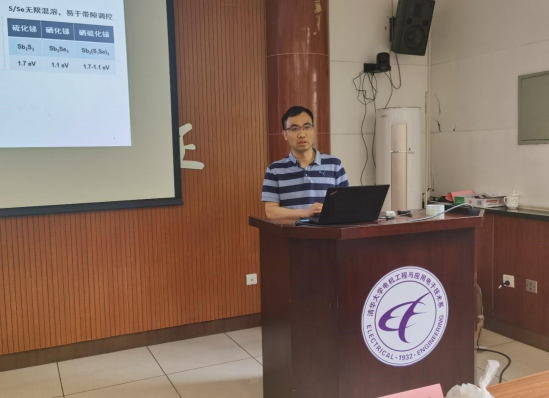
Chen Tao, a professor and doctoral supervisor of the University of Science and Technology of China, gave a report entitled "Selenium Antimony Sulfide: A New Member of the Photovoltaic Material Family". Chen Tao introduced the development history and basic characteristics of antimony selenium sulfide, and detailed their recent research in antimony selenium sulfide solar cells, including interface materials and the adjustment method of interface-induced crystal orientation, preparation of high-quality selenium antimony sulfide film by hydrothermal deposition, point defects and voltage loss mechanism. They realized a breakthrough in photoelectric conversion efficiency of >10.0% through the high-quality thin film, making it another photovoltaic material with an efficiency of more than 10% after perovskite.
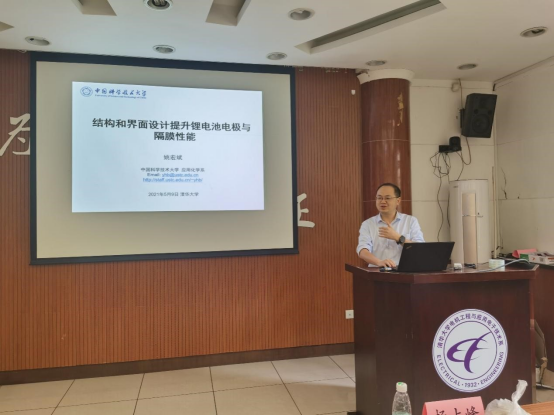
Yao Hongbin, professor and doctoral supervisor of the Department of Applied Chemistry, University of Science and Technology of China, gave a report on "Structure and Interface Design to Improve the Performance of Lithium Battery Electrodes and Separator". Yao Hongbin introduced their research progress in the multi-level structure and interface design of lithium batteries in recent years, including proposing to improve the mass transfer effect of lithium ions and realize that the ultra-thick electrode can still maintain a high capacity in high magnification through the design of vertical pore structure; creating a new train of though for the design of high-performance lithium metal anode through three-dimensional network structure, vertical pore structure current collector design and three-dimensional multi-stage pore solid state composite design; preparing a green and environmentally friendly high-performance lithium-ion battery separator, and applying the bionic structure design to the lithium-ion battery separator coating.
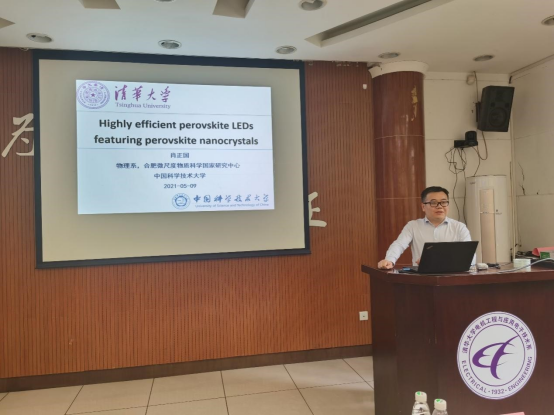
Professor Xiao Zhengguo of University of Science and Technology of China and doctoral tutor gave a report on "Highly efficient perovskite LEDs featuring perovskite nanocrystals". He introduced the research work on perovskite electroluminescent devices in details, covering the formation of ultra-thin perovskite film, defect passivation, and large-scale preparation of perovskite LEDs.
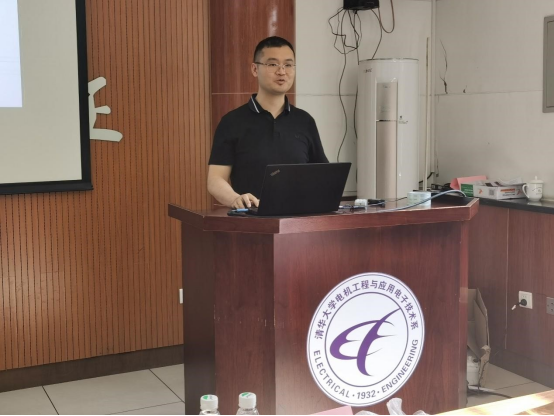
Xu Jixian, a professor and doctoral supervisor of the University of Science and Technology of China, gave a report entitled "Research on Key Technologies of Crystalline Silicon-Perovskite Two-terminal Tandem Solar Cells". Xu Jixian gave a detailed introduction to the issued including the suppression of photo-induced phase separation in perovskite materials, the suppression of perovskite device hysteresis, interface optimization, and stability measurement. By using an improved perovskite photovoltaic film, the solar conversion efficiency of the formed crystalline silicon-perovskite tandem cell is increased to 27%, which proves the feasibility and extensive applicability of using stacked technology to obtain higher efficiency than single junction silicon cells.
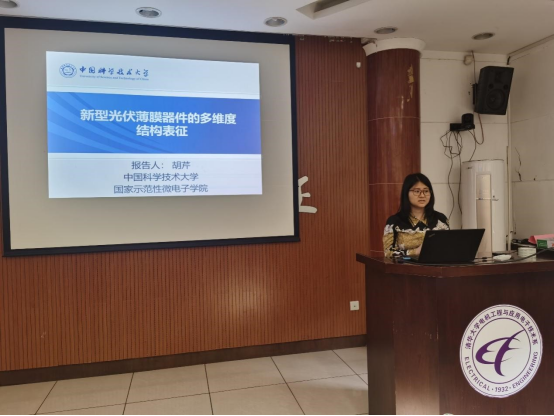
Hu Qin, a special researcher and doctoral supervisor of the University of Science and Technology of China, gave a report on the topic of "Multi-dimensional Structural Characterization of New Photovoltaic Thin Film Devices". She took the synchrotron radiation X-ray characterization technology as the starting point for the report, combined with her own learning experience in the Advanced Light Source (ALS) at Lawrence Berkeley National Laboratory in the United States, and elaborated on the research team's achievements in the field of perovskite solar cells and organic solar cells, especially in the crystallization kinetics and microstructure control of printed perovskite films, molecular arrangement and interface polarization of all-polymer active layers, and carrier transport in perovskite/non-fullerene heterojunctions, etc.
This report meeting is based on "carbon peak and carbon neutrality" to made in-depth exploration and exchanges on new photovoltaic and energy storage technologies, especially perovskite solar cells, in order to continuously break through technical barriers and further improve the photovoltaic conversion efficiency and stability of cells, and contribute to the clean and low-carbon energy development in China.

















 News & Events
News & Events